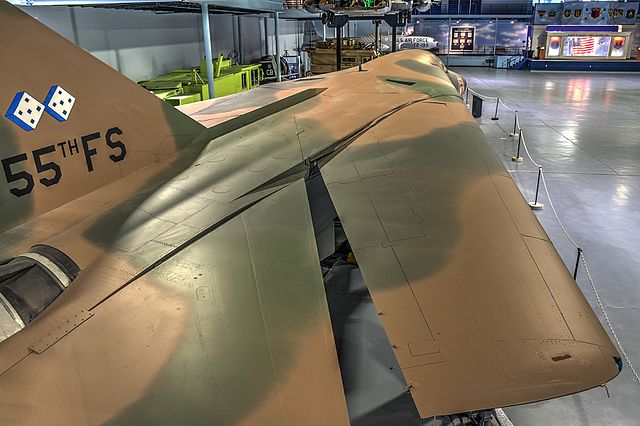The Rockwell B-1 Lancer is a supersonic variable-sweep wing, heavy bomber used by the United States Air Force. It has been nicknamed the "Bone". It is one of the Air Force's three strategic bombers, along with the B-2 Spirit and the B-52 Stratofortress, as of 2024. Its 75,000-pound payload is the heaviest of any U.S. bomber.
Rockwell B-1 Lancer
The XB-70 Valkyrie was chosen in 1957 to replace the Hustler, but suffered as a result of a switch in doctrine from high to low-altitude flying profiles
AN/APQ-140 radar for the B-1A
B-1A prototype
A variable-sweep wing, colloquially known as a "swing wing", is an airplane wing, or set of wings, that may be swept back and then returned to its original straight position during flight. It allows the aircraft's shape to be modified in flight, and is therefore an example of a variable-geometry aircraft.
Two Dassault Mirage G prototypes, the upper one with wings swept
A Grumman F-14 Tomcat testing an unusual asymmetric wing configuration, a possible in-flight failure case, showing one wing at minimum sweep and one at maximum sweep
The F-111 was the first variable-sweep wing aircraft to be put into production. Shown are three Australian F-111s.
F-111E on display at the Museum of Aviation, Robins AFB, United States








